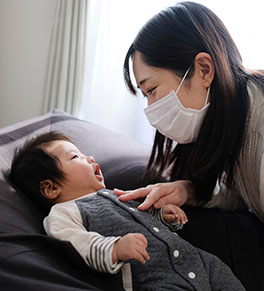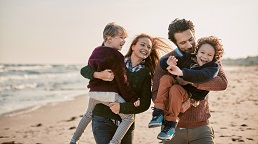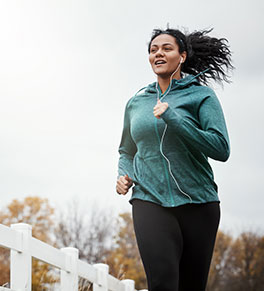Should everyone wear a mask?

Children age 2 and younger should not be masked, but their risk of exposure to the novel coronavirus needs to be reduced in other ways, the CDC says.
Face masks that cover the nose and mouth are required in public settings throughout California because they are very effective at curbing the spread of the virus that causes COVID-19.
But there are some people who cannot tolerate or are unable to wear masks.
Children under age 2 should not wear masks, and even slightly older kids may have difficulty wearing them appropriately, according to the Centers for Disease Control and Prevention.
People with breathing difficulties also need to be cautious about face coverings, says Shruti Gohil, MD, MPH, a UCI Health infectious disease expert and associate medical director of epidemiology and infection prevention.
Reducing risk
“Some people with certain respiratory illnesses may become short of breath or lightheaded when wearing masks, Gohil explains.
“If this happens they, you should discuss your options with your doctor because you may be at higher risk for complications if you get COVID-19. Finding ways to prevent infection is especially important for people with respiratory conditions.”
No matter how well a person tolerates wearing a mask, it’s best to do everything possible to lower your risk. And that means covering your nose and mouth, washing your hands frequently and keeping at least six feet of distance from others.
“Even if some of these people cannot tolerate a tight-fitting mask, they might well tolerate some kind of face covering, like a scarf,” she says. “While that’s not as good as a mask, your goal is to shave off as much risk of exposure to the virus as you can. So find something that works best for you.”
Additional CDC guidance
The CDC notes that masks may be inappropriate in certain other circumstances, such as:
- During high-intensity activities like running where a mask may hinder breathing.
- In work situations where masks may contribute to heat-related illness or get caught in machinery.
- While swimming when a wet face covering makes breathing difficult
- For anyone who is unconscious, incapacitated or unable to remove a cloth face covering without assistance
- For people with intellectual or developmental disabilities, mental health conditions or other sensitivities who may find wearing masks challenging
Extra caution required
In all of these cases, Gohil says, people who forego masks need to be extra vigilant.
Here are some dos and don’ts when masks aren’t an option:
- Avoid indoor public spaces and crowds if you have a medical or psychiatric condition that makes it impossible to wear a face covering.
- Be careful to maintain at a least a six-foot distance in all situations, whether in a store, while swimming or walking outside.
- Exercise outdoors where it’s well ventilated and easier to maintain a safe distance from others.
- Prioritize wearing face coverings you can tolerate when social distancing isn’t possible, such as during carpool drop-offs, standing in lines, at work meetings or when traveling in a group.
- Use written means to communicate with people who are deaf or hard of hearing, or choose a mask with clear area over the mouth to aid lip-reading.
- Wash your hands often and avoid touching your eyes, nose and mouth — or your infant and children — when out and about.
‘The onus is on us’
“Because some people can’t tolerate wearing a mask, that really puts the onus on the rest us to wear face coverings,” says Gohil.
“When you look at it from a public health standpoint, if everybody does their part, we can stop the spread of this virus.”





